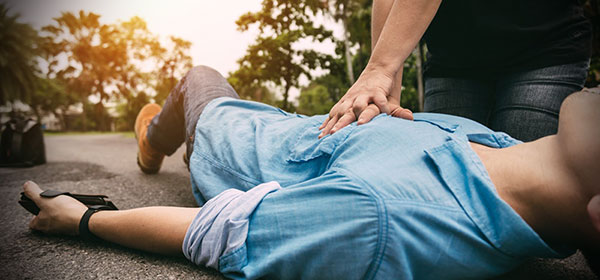As a rule, most of us manage to navigate through life without being called upon to administer first aid for serious accidents. While we all know how to deal with small issues like cuts and scrapes, dealing with injuries sustained after traffic accidents or as a result of other emergencies is something we don’t usually have to deal with until … that moment when it happens. Then, you feel terribly unprepared to deal with the situation!
So what can you do to make sure you are prepared to deal with first aid after an accident? Here are some handy dos and don’ts from Real First Aid that can make a real difference when the unexpected happens.
1. Make sure the scene is safe. You are the most important person during an emergency incident. You must ensure your safety above that of the person you are trying to save. If you are in danger make the scene safe, if not wait for emergency services or someone who can render the scene safe. YOUR safety is paramount.
2. Call for help. This is not instead of administering first aid, but as well as. Make sure someone apart from yourself knows what has happened and can call for emergency services, if needed, find out if there is a doctor, nurse or paramedic present, or someone with first aid training.
3. Complete your primary survey
a. Danger
Check for danger
b. Response
Check for verbal response
Check for response to painful stimulus
c. Send for help
Call 000
d. Airway
Check and clear the patient’s airway
e. Breathing
Check for normal breathing for 10 secs
f. CPR
If no breathing start CPR
30 compressions to two breaths
- rate of 100/min
- 1/3 of the chest
- if you don’t want to do breaths don’t and continue non-stop compressions.
g. Defibrillation
Attach an AED and follow the prompts
4. Any attempt at CPR is a good attempt
A person who is not breathing should be considered clinically dead to a first aider. You cannot hurt a dead person, but you may just save them. If you are unsure, still start CPR. If you remain unsure the emergency 000 operator will guide you through performing compression only CPR.
5. Always try to stop bleeding
Direct pressure over the wound using anything you have such as bandages, towels, tissues etc to stop bleeding. As a last resort apply a tourniquet. Any life-threatening bleeding you should call an ambulance.
6. Treat all burns with cool running water
The initial treatment for all burns is to put them under cool running water for 20 min. Don’t be tempted to use ice or ice-cold water. Contact 000 if the burn is large, deep, on someone’s airway, genitals or other dangerous body area, if they are in severe pain or you are concerned the burn requires an ambulance.
7. Treating stings and bites
Try and find out what type of animal or insect has caused the injury. Bee stingers can be removed by gently scraping a credit card across the skin. Apply an ice pack for swellings and seek medical attention for unknown injuries in case of venoms.
8. Sprains
Use the RICER approach: Rest, Ice, Compression, Elevation and Refer the person to medical help if there is concern of a fracture.
9. Have a well-stocked first aid kit
Make sure your first aid kit is appropriate for the location, the event, and the number and type of people present and that it is re-stocked every time that supplies have been used.
Like many things in life, administering first aid becomes easier with practice. If you think you may panic or won’t know what to do in an emergency, nothing beats attending a professional first aid course to help you familiarise yourself with the skills you may need.
It is also important to regularly refresh your training. Not only do you forget things after a period of time, medical treatments and procedures have also been updated over the years and recommendations now may be different from even five years ago.
Want to find out more? At Real First Aid, you can find a number of courses that teach people first aid skills, from basic response to advanced training. With real life simulations, sights, sounds and professional instructors, you can make sure you are in control if ever you need to act in a first aid situation.

